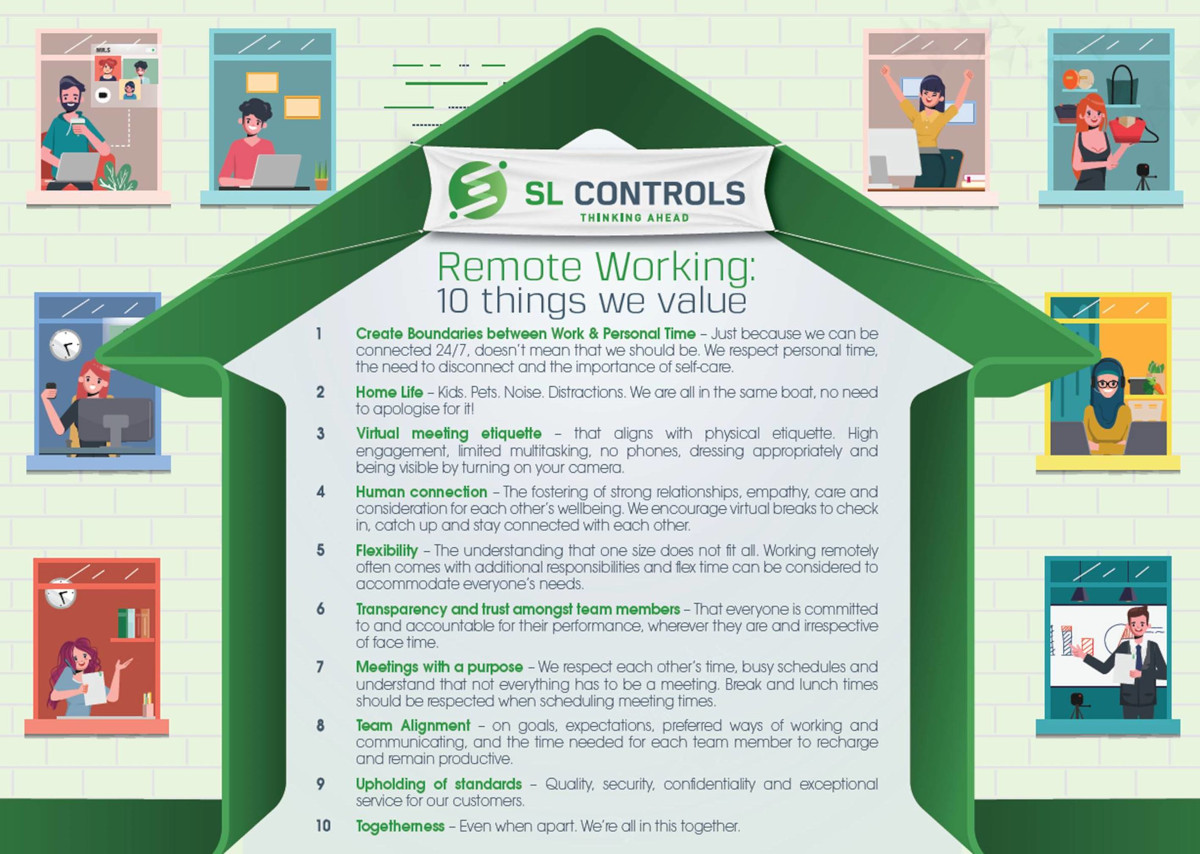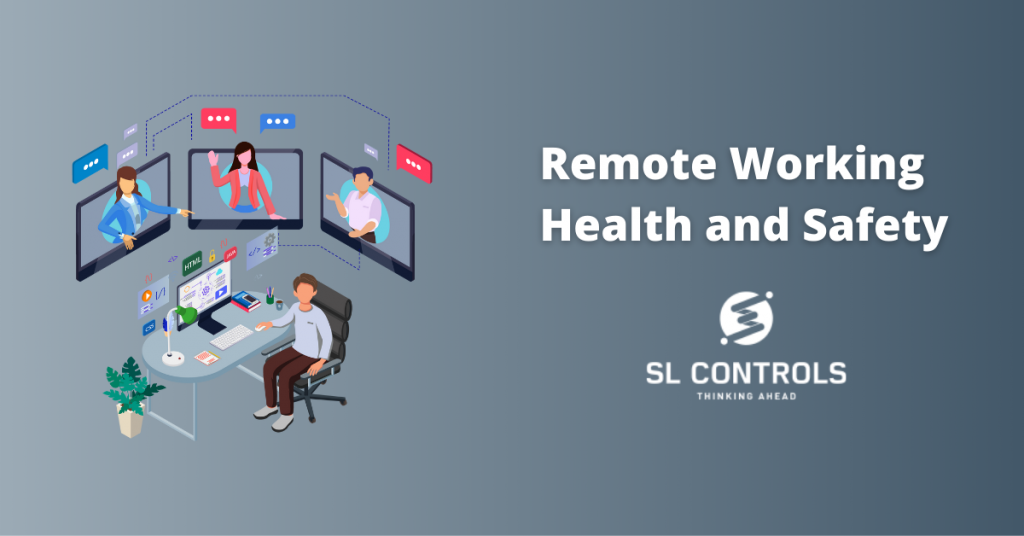Health and safety is a top priority here at SL Controls, so we have always had robust and continuously reviewed health and safety procedures in place. Like many other companies over the past 18 months, we have adjusted the way we operate and deliver our services, resulting in a greater level of remote working. Our health and safety procedures have had to evolve too.
We have had a remote working policy at SL Controls for many years now. Some of our staff would have worked from home for a certain amount of time each week, plus we regularly had engineers who would spend considerable amounts of time at client sites. That said, the default position was that staff would work in the office.
When the lockdowns were put in place to combat the Covid-19 pandemic, this changed overnight, with all staff moving to a remote working situation. We dealt with this change effectively as we already had the IT infrastructure in place and previous experience.
We did refine the way we operated, however, to ensure staff wellbeing, meet company objectives, and provide services to clients. This experience led us to review our approach in relation to where and how SL Controls staff worked.
The result of that review was to adjust our policy to make it much more open to remote working, as we could clearly see the benefits. There isn’t a one-size-fits-all solution for every member of staff, but offering greater flexibility is the approach we now take.
That has had an impact on health and safety – specifically, remote working health and safety.
Remote Working Health and Safety Checklist
During the lockdown, we introduced a remote working checklist to ensure the health and safety of staff working from home. This was based on the health and safety risk assessments we would have done in our office locations, but then adapted for home working environments.
The checklist ensures employees have a set up at home that is safe, and it helps managers to understand if the company needs to provide any support. The checklist has another important function as well, as it also highlights remote working health and safety issues that might otherwise be missed.
The remote working health and safety checklist has seven categories of questions that include:
- Desk area – focusing on adequate space, cables, light, etc.
- Screens and workstation – focusing on posture and comfort while operating a computer.
- Fire and electrical – covering things like smoke detectors, wear and tear of electrical equipment, and other potential fire hazards.
- Manual handling – for the prevention of injuries when lifting or reaching for items.
- Slips, trips, and falls – highlighting common risks that could cause a fall.
- Lone working – highlighting important issues around lone working, including having the ability to quickly and easily contact a manager or supervisor whenever needed.
- Stress and welfare – ensuring regular breaks are taken and that the employee is taking care of themselves when working from home.
Regular Communication and Information
The remote working health and safety checklist isn’t the only thing that we do to ensure the wellbeing of our staff while they are working remotely. We also send out regular surveys to get feedback from employees to see how they feel about remote working. One of the reasons for this is that circumstances can change, so what worked in the past might now be difficult.
We have also published a Remote Working Charter and we have distributed it to everyone on the team. The Charter highlights 10 things we value at SL Controls when working remotely. Examples include creating boundaries between work and personal time, understanding the realities of how home life can impact work, and the importance of maintaining togetherness and human connections.

Continuous Review
We have a policy of continuous improvement at SL Controls, so our health and safety procedures, including documents like our remote working checklist, are kept in constant review. This ensures we can remain agile and flexible as a company, while also ensuring the health and safety of our employees.





